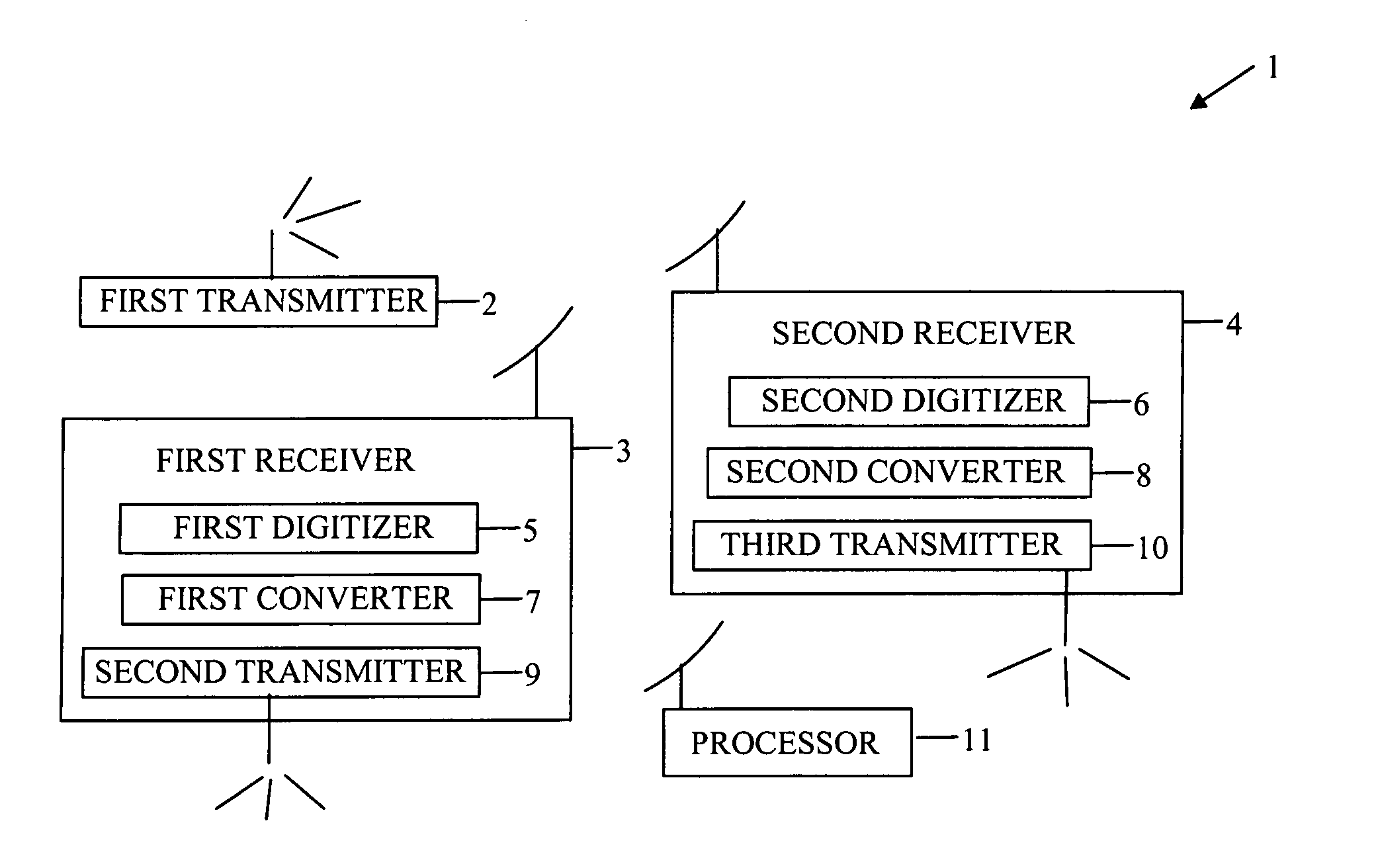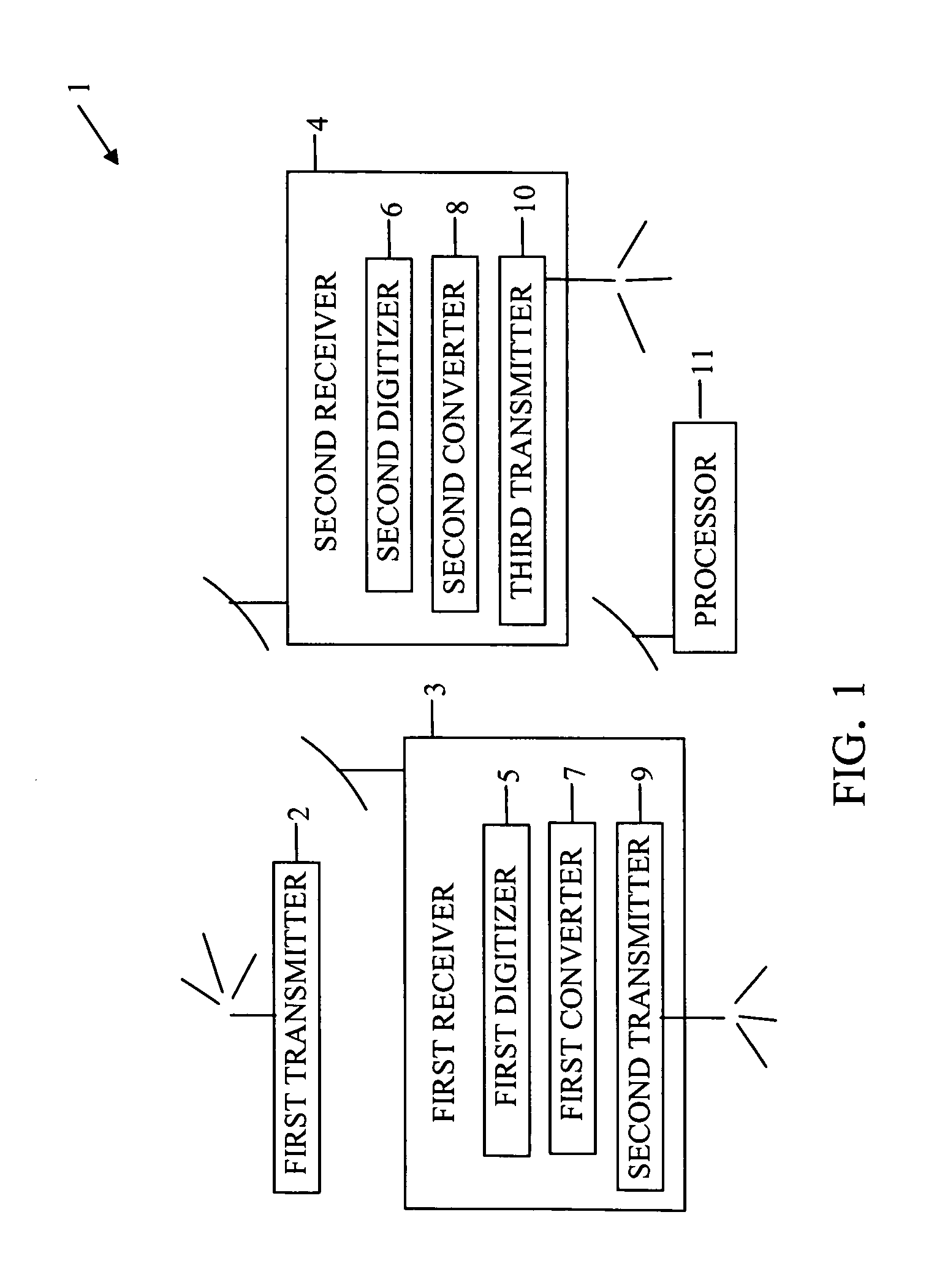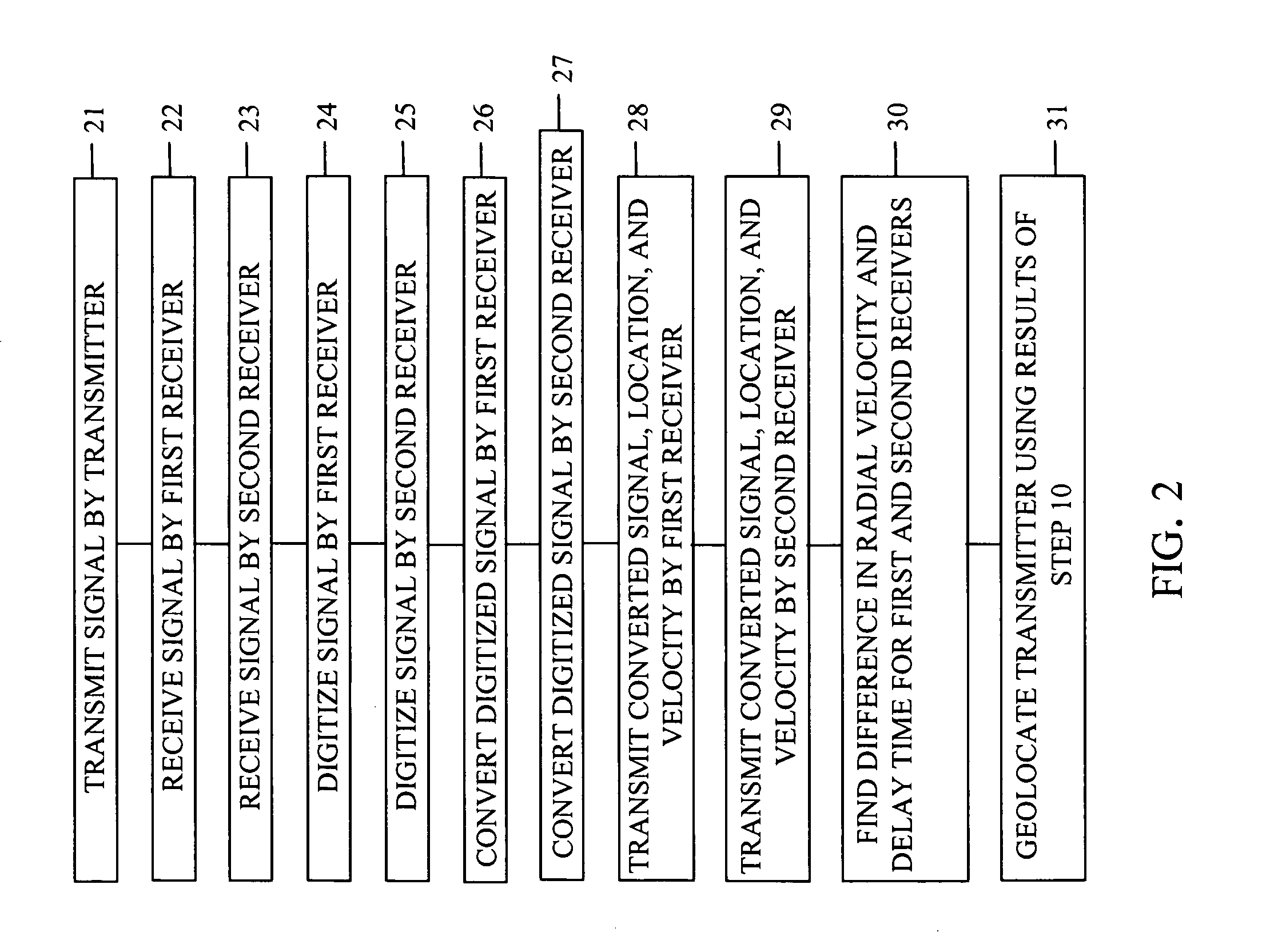Device for and method of geolocation
a geolocation and device technology, applied in direction finders, direction finders using radio waves, instruments, etc., can solve the problems of low signal-to-noise ratio (snr), the method of chan et al. exhibits precision problems at low snr, and cannot process complex-valued signals. achieve the effect of more precision
- Summary
- Abstract
- Description
- Claims
- Application Information
AI Technical Summary
Benefits of technology
Problems solved by technology
Method used
Image
Examples
Embodiment Construction
[0049]The present invention is a device for and method of geolocating a transmitter. The present device and method improve upon Dr. Stein's method by disclosing a device for and method of processing wide-band signals. The present device and method improve upon the method of Chan et al. by disclosing a device for and method of processing large-length, wide-band signals without losing precision and processing complex-valued signals. Chan et al. does not process complex-valued signals and is constrained by the length of the data.
[0050]FIG. 1 is a schematic of the device 1 of the present invention.
[0051]The device 1 includes a first transmitter 2. The first transmitter 2 is geolocated by the present method. The first transmitter 2 transmits a signal that is used to geolocate the first transmitter 2. In the preferred embodiment, the signal transmitted by the first transmitter 1 is a real-valued signal.
[0052]The device 1 includes a first receiver 3. The first receiver 3, starting at a tim...
PUM
 Login to View More
Login to View More Abstract
Description
Claims
Application Information
 Login to View More
Login to View More - R&D
- Intellectual Property
- Life Sciences
- Materials
- Tech Scout
- Unparalleled Data Quality
- Higher Quality Content
- 60% Fewer Hallucinations
Browse by: Latest US Patents, China's latest patents, Technical Efficacy Thesaurus, Application Domain, Technology Topic, Popular Technical Reports.
© 2025 PatSnap. All rights reserved.Legal|Privacy policy|Modern Slavery Act Transparency Statement|Sitemap|About US| Contact US: help@patsnap.com



